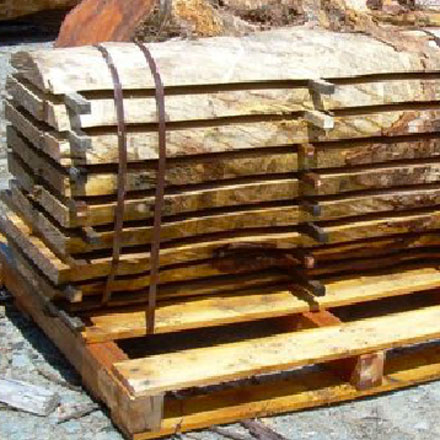
Sassafras hydrowood
Beneath the dark, frigid waters of Tasmania’s hydro-electric lakes lies a vast, lost treasure. The island’s hydro schemes — constructed throughout the 20th century — dragged its economy into the industrial age. Source: The Australian
They also flooded large tracts of old-growth forests; a massive loss of now highly prized and increasingly rare timber.
However, this forsaken resource — including distinctive and valuable timbers such as celery top and Huon pine, sassafras, myrtle and blackwood — is lost no more.
Two local entrepreneurs have mastered a means of harvesting the still-standing drowned forests from the bottom of hydro lakes.
Given that the operation was dreamt up over a few beers five years ago, and was for a long while dismissed by many as “crazy”, it is a significant achievement.
“There is relief, but pride is the overwhelming emotion,” said Andrew Morgan, an environmental consultant who developed Hydrowood with business partner David Wise.
“To have taken it from an idea to this, you have to pinch yourself and say ‘well, it’s actually working’. And to then nail the marketing has been the icing on the cake.”
The two men are focused on achieving a premium for Hydrowood based on its remarkable provenance and the story of a resource wasted by one generation but resurrected by another.
The operation, which began commercial harvesting in 2015, was seeded in 2014 by a $5 million federal grant aimed at assisting Tasmania’s struggling forestry industry.
The pair privately sourced an additional $2m, an amount they now expect to recover within 12 months, even after paying royalties to access the lakes.
On the shores of western Tasmania’s Lake Pieman — created in 1986 by one of the last hydro dams — their success is evident in the stacks of sawlogs.
Sonar surveys have provided a map of which timber lies where.
Armed with this information, out on the lake’s still waters a custom-built barge manoeuvres between the tops of dead trees.
An excavator chained to the barge, with a long arm ending in a clawed harvesting head, reaches as deep as 26m, “feeling” for the base of a drowned tree.
Once the operator, Will Gordon, is confident he has his target, a chainsaw in the harvesting head cuts it free and the trunk is lifted to the surface, striking sunlight for the first time in 30 years.
The timber is preserved due to low temperature and oxygen levels in the lake, as well as the protection from sunlight afforded by the tannin-stained water.
It is mostly sold to makers of fine furniture and flooring in Victoria and Tasmania. Launceston furniture maker Simon Ancher was among the first to trial its use, finding it “relaxed” and easier to work than normal timber.
Mr Ancher said craftsmen reluctant to use rainforest timbers, due to concerns about sustainability, were happy to embrace the salvaged timber.
“These trees coming out of Lake Pieman are high-quality, old-growth timber, but I don’t feel bad about using that because it was lost and destroyed 30 years ago,” he said.
The scale of the Hydrowood resource is striking. Mr Morgan estimates the 2200ha Lake Pieman has enough to last 10 years.
Hydrowood has obtained the right to then harvest the drowned forests of Lake Gordon, 10 times the size.
Beyond that, so far four other lakes have been surveyed and found to hold promise.
“We can’t guarantee that we’ll be here for 100 years, but we might,” Mr Morgan said.





